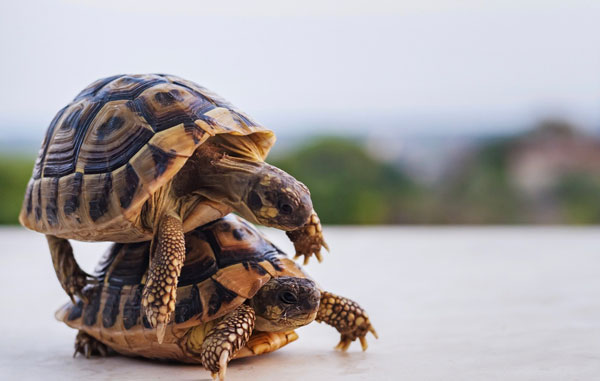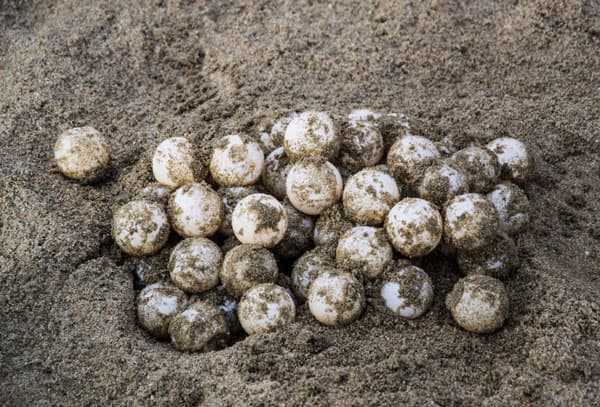How Do Sea Turtles Mate? An In-Depth Look at Their Reproductive Behavior
Sea turtles are fascinating creatures that have roamed the oceans for millions of years. Their mating process is complex and influenced by various environmental factors. This article provides valuable insights into how sea turtles mate, reach sexual maturity, and the challenges they face in their conservation.

When Does a Sea Turtle Reach Sexual Maturity?
Sea turtles reach sexual maturity at different ages depending on their species. For instance, the loggerhead sea turtle typically reaches maturity between 17 and 33 years. Green sea turtles take about 20 to 50 years. This long maturity period poses significant challenges for their survival.
Factors influencing sexual maturity in sea turtles include genetic heritage, environmental conditions, and availability of food resources. Males usually reach maturity sooner than females, which aligns with their different reproductive roles. Mature males patrol feeding grounds looking for potential mates, an activity critical for mating success.
Interestingly, the temperature of the sand where they hatch also influences the sex and maturity rate of sea turtles. Warmer sands produce more female turtles, while cooler sands create more males. This temperature-dependent sex ratio is a crucial factor in understanding sea turtle populations and their reproductive behaviors.
Courtship Rituals
Courtship rituals in sea turtles are intriguing and essential for successful mating. When a male turtle locates a female, he uses physical prowess to cling to her shell. Males have elongated claws on their front flippers, specialized for gripping the female during courtship and mating.
Courtship involves a series of complex behaviors including nuzzling, biting, and synchronous swimming. These actions serve to synchronize the mating drive of the female. Females can be quite selective, and not all mating attempts are successful. Male competition is fierce, and physical confrontations between males vying for a female are common.
The courtship duration varies, extending from several minutes to hours. Successful courtship results in the female accommodating the male, permitting the physical mating process to commence. These rituals are crucial for the synchronization of reproductive readiness in both sexes.
Mating Process
Mating occurs in the water, often near the surface. The physical mating process begins with the male mounting the female’s back, and securing himself with his front flippers. He uses a specialized, elongated tail to facilitate copulation.
Sperm transfer to the female can result in multiple fertilized eggs. Because females can store sperm, a single mating incident can fertilize several clutches of eggs over a nesting season. This adaptability offers reproductive success even if subsequent male encounters are scarce.
Mating is energetically demanding. Males often travel long distances during mating seasons, seeking females. After successful copulation, males often depart to forage and rest, leaving females to undertake the onerous tasks of egg-laying and nesting.
Nesting Behavior
Post-mating, female sea turtles undergo significant physiological changes in preparation for nesting. They embark on long migrations, often returning to the beaches where they hatched to lay their eggs. This phenomenon, known as natal homing, underscores the remarkable navigation skills of sea turtles.
Upon reaching the nesting beach, females typically wait until night to begin their nesting activities. They dig holes in the sand using their flippers, creating a nest chamber to deposit their eggs. Nesting can last several hours as the female meticulously covers the nest to camouflage it from predators.

Each female turtle can lay multiple nests during a single season, with intervals of 10-15 days between each nesting. A single nest often contains between 80-120 eggs. This egg-laying strategy maximizes survival odds for the hatchlings, given the numerous threats they face.
Challenges to Turtle Mating Success
Environmental challenges significantly impact sea turtle mating success. Climate change alters sand temperatures affecting sex ratios and hatchling viability. Warmer sands result in skewed sex ratios, predominantly producing females, which can disrupt future mating dynamics.
Pollution, particularly plastic waste in oceans, poses severe risks. Turtles can consume plastics or become entangled, leading to injury or death. Such threats diminish turtle populations and affect their reproductive potential.
Human activities are another concern. Coastal development destroys nesting sites, making it difficult for females to find suitable nesting locations. Fishing practices, especially those involving nets and lines, inadvertently capture and kill sea turtles, reducing mating opportunities.
Furthermore, light pollution from coastal cities disorients hatchlings, drawing them away from the ocean and increasing mortality rates. Conservation efforts are paramount to mitigate these environmental challenges and support sea turtle populations.
Conclusion
Understanding how sea turtles mate, their reproductive behaviors, and the challenges they face is crucial for conservation efforts. Protecting their habitats and mitigating environmental threats can enhance their survival rates. This knowledge fosters appreciation and support for these remarkable oceanic navigators.
FAQ
Do sea turtles have one mate for life?
No, sea turtles do not have one mate for life. They are promiscuous and can mate with multiple partners during the mating season. Females often store sperm from different males to fertilize multiple clutches of eggs.
Do sea turtles reproduce asexually?
No, sea turtles do not reproduce asexually. They require male and female pairs for sexual reproduction. The males fertilize the eggs, a critical process for producing viable offspring.
Do sea turtles mate underwater?
Yes, sea turtles primarily mate underwater, often near the water’s surface. The buoyancy provides support, making it easier for the male to mount the female and successfully copulate.
